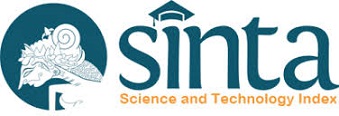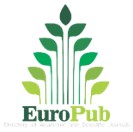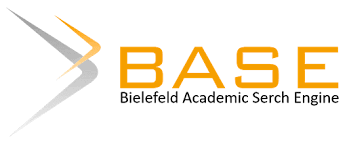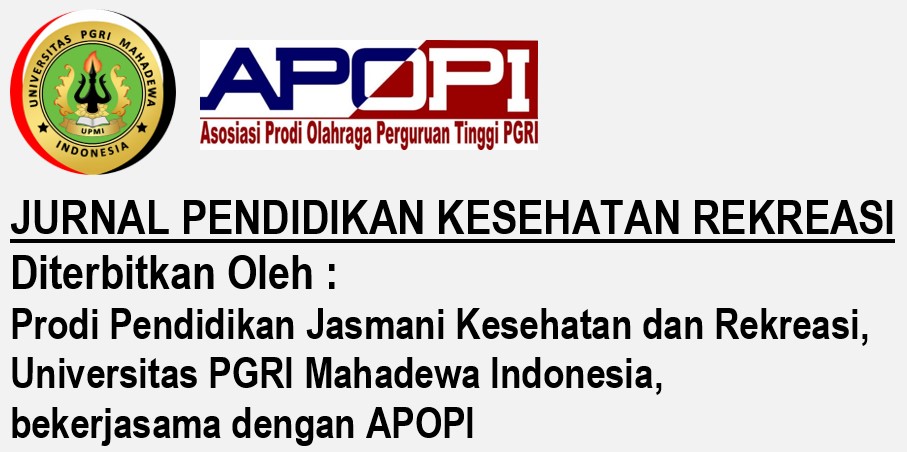Health Belief Model dan Pemahaman Penggunaan Vitamin C di Kota Denpasar
DOI:
https://doi.org/10.5281/zenodo.5814051Keywords:
HBM, vitamin C, perceived benefitsAbstract
Perilaku masyarakat merupakan pengalaman yang menyebabkan pemahaman berbeda mengenai pemahaman vitamin C dan dapat menyebabkan kesalahan penggunaan. Tujuan penelitian ini untuk mengetahui hubungan health belief model (HBM) dengan pemahaman penggunaan vitamin C. Penelitian ini menggunakan desain cross-sectional dengan jumlah 96 sampel di Kota Denpasar. Pengumpulan data dilakukan dari Bulan Juni-Agustus 2021 dengan menggunakan kuesioner dan dianalisis menggunakan uji binary logistic. Hasil penelitian menunjukkan nilai perilaku berdasarkan perceived susceptibilitiy perceived severity, health motivation, perceived benefits dan self efficacy tidak memberikan hubungan yang signifikan dengan pemahaman penggunaan vitamin C (P>0,05), sedangkan perceived benefits memberikan hasil yang signifikan (P<0,05). Perceived benefits memberikan pengaruh terhadap penggunaan vitamin C sebagai terapi tambahan dengan memberikan pengaruh positif perilaku dalam meningkatkan kualitas hidup meskipun ketika efek belum terbukti memperbaiki kondisi kesehatan. Oleh karena itu, perlu dilakukan pemberian informasi yang tepat oleh tenaga kesehatan tentang keuntungan penggunaan vitamin C dalam meningkatkan penggunaan obat yang tepat.
Downloads
References
Arimbawa, P. E., Hita, I. P. G. A. P., & Wardhana, Z. F. (2021). Health belief model and the understanding of rational use of medicines. International Journal of Public Health Science, 10(2), 411–417. https://doi.org/10.11591/ijphs.v10i2.20737
Asadi-pooya, A. A., & Emami, M. (2014). Perception and Use of Complementary and Alternative Medicine among Children and Adults with Epilepsy : The Importance of the Decision Makers. Acta Medica Iranica, 52, 1–5
Bahall, M., & Edwards, M. (2015). Perceptions of complementary and alternative medicine among cardiac patients in South Trinidad: A qualitative study. BMC Complementary and Alternative Medicine, 15, 1–10. https://doi.org/10.1186/s12906-015-0577-8
BPS. (2020). Badan Pusat Statistika Bali. https://bali.bps.go.id/
Carr, A. C., & Lykkesfeldt, J. (2021). Discrepancies in global vitamin C recommendations: a review of RDA criteria and underlying health perspectives. Critical Reviews in Food Science and Nutrition, 61(5), 742–755. https://doi.org/10.1080/10408398.2020.1744513
Carr, A. C., & Maggini, S. (2017). Vitamin C and immune function. Nutrients, 9(11), 1–25. https://doi.org/10.3390/nu9111211
Chambial, S., Dwivedi, S., Shukla, K. K., John, P. J., & Sharma, P. (2013). Vitamin C in disease prevention and cure: An overview. Indian Journal of Clinical Biochemistry, 28(4), 314–328. https://doi.org/10.1007/s12291-013-0375-3
Davis, M. A., West, A. N., Weeks, W. B., & Sirovich, B. E. (2011). Health behaviors and utilization among users of complementary and alternative medicine for treatment versus health promotion. Health Services Research, 46, 1402–1416. https://doi.org/10.1111/j.1475-6773.2011.01270.x
E Mathew, J. M., Sreedharan, J., John, L., John, J., Mehboob, M., & Mathew, A. (2013). Self-Reported Use of Complementary and Alternative Medicine among the Health Care Consumers at a Tertiary Care Center in Ajman, United Arab Emirates. The Annals of Medical and Health Sciences Research, 3, 215–219
Edwards, E. (2012). The Role of Complementary, Alternative, and Integrative Medicine in Personalized Health Care. Neuropsychopharmacology, 37(1), 293–295. https://doi.org/10.1038/npp.2011.92
Erci, B., & Cicek, Z. (2017). Reliability and Validity of Drugs Use Health Belief Scale in Adult Women. International Archives of Nursing and Health Care, 3, 1–7. https://doi.org/10.23937/2469-5823/1510064
Garland, S. N., Valentine, D., Desai, K., Li, S., Langer, C., Evans, T., & Mao, J. J. (2013). Complementary and Alternative Medicine Use and Benefit Finding Among Cancer Patients. The Journal of Alternative and Complementary Medicine, 19(11), 876–881. https://doi.org/10.1089/acm.2012.0964
George, M. (2013). A Systematic Review of Complementary and Alternative Medicine for Asthma Self- management. Nursing Clinics of NA, 48, 53–149. https://doi.org/10.1016/j.cnur.2012.11.002
Joos, S., Glassen, K., & Musselmann, B. (2012). Herbal medicine in primary healthcare in Germany: The Patient’s perspective. Evidence-Based Complementary and Alternative Medicine, 2012, 1–10. https://doi.org/10.1155/2012/294638
Kemper, K. J., & Hill, E. (2017). Training in Integrative Therapies Increases Self-Efficacy in Providing Nondrug Therapies and Self-Confidence in Offering Compassionate Care. Journal of Evidence-Based Complementary and Alternative Medicine, 22, 618–623. https://doi.org/10.1177/2156587216686463
Khalish, M., & Wulandari, L. Y. (2020). The Vitamin C Berpengaruh dalam Memperbaiki Kerusakan Hepar Akibat Pemberian Monosodium Glutamat. Jurnal Penelitian Perawat Profesional, 2(2), 125–130. https://doi.org/10.37287/jppp.v2i2.67
Lykkesfeldt, J. (2020). On the effect of vitamin C intake on human health: How to (mis)interprete the clinical evidence. Redox Biology, 34(March), 101532. https://doi.org/10.1016/j.redox.2020.101532
McQuaid, E., Fedele, D., Adams, S., Koinis-Mitchell, D., Mitchel, J., Kopel, S., Seifer, R., Jandasek, B., Fritz, G., & Canino, G. (2014). Complementary and alternative medicine use and adherence to asthma medications among Latino and non-Latino white families. Academic Pedriatic, 14, 192–199
Monacelli, F., Acquarone, E., Giannotti, C., Borghi, R., & Nencioni, A. (2017). Vitamin C, aging and Alzheimer’s disease. Nutrients, 9(7), 1–26. https://doi.org/10.3390/nu9070670
Mukti, A. W. (2020). Hubungan Pengetahuan terhadap Perilaku Penggunaan Suplemen Kesehatan Warga Kebonsari Surabaya di Masa Pandemi Covid-19. FARMASIS: Jurnal Sains Farmasi, 1(1), 20–25. http://jurnal.unipasby.ac.id/index.php/farmasis/article/view/2656
Nuriannisa, F., & Yuliani, K. (2021). Implementasi Konsep Health Belief Model terhadap Asupan Antioksidan Mahasiswa Gizi selama Pandemi COVID-19. Jurnal Gizi, 10(1), 14. https://doi.org/10.26714/jg.10.1.2021.14-22
Oh, B., Butow, P., Mullan, B., Beale, P., Pavlakis, N., Rosenthal, D., & Clarke, S. (2010). The use and perceived benefits resulting from the use of complementary and alternative medicine by cancer patients in Australia. Asia-Pacific Journal of Clinical Oncology, 6, 342–349. https://doi.org/10.1111/j.1743-7563.2010.01329.x
Okoronkwo, I., Onyia-Pat, J. L., Okpala, P., Agbo, M. A., & Ndu, A. (2014). Patterns of complementary and alternative medicine use, perceived benefits, and adverse effects among adult users in Enugu Urban, Southeast Nigeria. Evidence-Based Complementary and Alternative Medicine, 2014, 1–6. https://doi.org/10.1155/2014/239372
Pullar, J. M., Carr, A. C., & Vissers, M. C. M. (2017). The roles of vitamin C in skin health. Nutrients, 9(8). https://doi.org/10.3390/nu9080866
Putra, P. I. P., & Yadnya, I. P. (2018). Analisis Sektor Unggulan Perekonomian di Kabupaten/Kota Denpasar, Badung, Gianyar, dan Tabanan. Manajemen Unud, 7(10), 5657–5685
Rejeski, W. J., & Fanning, J. (2019). Models and theories of health behavior and clinical interventions in aging: A contemporary, integrative approach. Clinical Interventions in Aging, 14, 1007–1019. https://doi.org/10.2147/CIA.S206974
Rhee, T. G., & Harris, I. M. (2018). Reasons for and perceived benefits of utilizing complementary and alternative medicine in U.S. adults with migraines/severe headaches. Complementary Therapies in Clinical Practice, 30, 44–49. https://doi.org/10.1016/j.ctcp.2017.12.003
Saputri, R. K., & Yuliani, E. (2020). Faktor-Faktor Yang Mempengaruhi Konsumen Dalam Pengambilan Keputusan Pembelian Produk Suplemen Vitamin C di Bojonegoro. JAPRI, 3(1), 44–52
Siahaan, S. A. S., Usia, T., Pujiati, S., Tarigan, I. U., Murhandini, S., Isfandari, S., & Tiurdinawati, T. (2017). Pengetahuan, Sikap, dan Perilaku Masyarakat dalam Memilih Obat yang Aman di Tiga Provinsi di Indonesia. Jurnal Kefarmasian Indonesia, 7(2), 136–145. https://doi.org/10.22435/jki.v7i2.5859.136-145
Sridhar, S. B., Shariff, A., Halabi, N. Al, Sarmini, R., & Harb, L. A. (2017). ssessment of Perception, Experience, and Information-seeking Behavior of the Public of Ras Al-Khaimah, United Arab Emirates, Toward Usage and Safety of Complementary and Alternative Medicine. J Pharm Bioallied, 9, 48–55
Stub, T., Quandt, S. A., Arcury, T. A., Sandberg, J. C., Kristoffersen, A. E., Musial, F., & Salamonsen, A. (2016). Perception of risk and communication among conventional and complementary health care providers involving cancer patients’ use of complementary therapies: A literature review. BMC Complementary and Alternative Medicine, 16, 1–14. https://doi.org/10.1186/s12906-016-1326-3
Syofyan, Ghiffari, H. D., & Erizal Zaini. (2017). Persepsi, pengetahuan, dan sikap tentang obat pada siswa sekolah menengah atas (SMA) di Kota Pariaman, Sumatera Barat. Jurnal Sains Farmasi & Klinis, 4(2), 83–87. https://doi.org/10.29208/jsfk.2017.4.1.202
Veziari, Y., Leach, M. J., & Kumar, S. (2017). Barriers to the conduct and application of research in complementary and alternative medicine: A systematic review. BMC Complementary and Alternative Medicine, 17, 1–14. https://doi.org/10.1186/s12906-017-1660-0
Welz, A. N., Emberger-Klein, A., & Menrad, K. (2018). Why people use herbal medicine: Insights from a focus-group study in Germany. BMC Complementary and Alternative Medicine, 18, 1–9. https://doi.org/10.1186/s12906-018-2160-6
Downloads
Published
How to Cite
Issue
Section
License
Copyright (c) 2022 Jurnal Pendidikan Kesehatan Rekreasi

This work is licensed under a Creative Commons Attribution-NonCommercial-ShareAlike 4.0 International License.
Jurnal Pendidikan Kesehatan Rekreasi is published under the terms of Creative Commons Attribution 4.0 International License / CC BY NC SA 4.0. This license permits others to copy, distribute, modify, and create derivative works for non-commercial purposes only


































